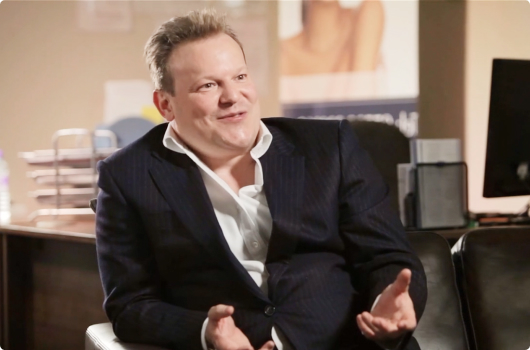A Closer Look at ACDF Surgery From Spine Art
Dealing with neck pain or arm numbness can severely impact your daily life. Anterior Cervical Discectomy and Fusion (ACDF) surgery is designed to relieve pain and restore your well-being. This cervical fusion procedure helps alleviate neck pain plus shoulder and arm pain by removing the damaged disc material causing spinal nerve root compression. It also stabilizes the spine with a carefully designed implant. ACDF surgery recovery is generally smooth, with many patients experiencing a significant improvement in their symptoms. Some postoperative pain however is expected. Spine Art is committed to unparalleled care backed by over 25 years of expertise. Discover the benefits of our expert-led ACDF spine surgery and start your journey towards a pain-free life.
Book a consultation
What is ACDF Surgery?
ACDF surgery, or Anterior Cervical Discectomy and Fusion, is a procedure designed to address cervical spine issues and problems such as damaged or herniated discs. It involves removing these discs through an incision in the front of your neck. After removing the disc, the adjacent vertebrae are fused using an implant containing bio-engineered bone graft. This implant promotes stability, restores the anatomy of the spine and has a 95% chance of successful bone fusion. ACDF surgery focuses on restoring the function of the cervical spine, providing relief and improving mobility for patients dealing with neck or shoulder pain, arm pain, numbness, pins & needles or weakness.
Recognising When ACDF Surgery May Be Necessary
Several conditions may warrant ACDF surgery. These include cervical disc herniation, spinal stenosis, and cervical spondylosis. Symptoms such as neck pain, arm pain, numbness or tingling in the hands or fingers, and weakness in the arms or hands may indicate the need for surgical intervention. Recognising these symptoms early and seeking expert advice can lead to better outcomes and improved quality of life. Identifying and discussing these conditions and associated symptoms is key to determining whether ACDF surgery can help. Early intervention can lead to good outcomes and significantly improve a patient’s quality of life. Here is a closer look at the common conditions warranting ACDF surgery:
- Cervical Disc Herniation – Cervical disc herniation occurs when a disc in the neck becomes displaced or ruptured, pressing on nearby nerves. This pressure can cause significant neck pain, arm pain, and tingling, numbness or even weakness in your arm or hand.
- Spinal Stenosis – Spinal stenosis is characterised by a narrowing within the cervical spinal canal, which when severe, compresses the spinal cord and nerve roots. This condition often results in pain, numbness, weakness, or difficulty with coordination of the hands and legs.
- Degenerative Disc Disease – Over time, discs in the cervical spine may deteriorate, leading to degenerative disc disease. This generation can cause chronic neck and shoulder pain, headaches, stiffness, and reduced range of motion.
Navigating Through the Steps of ACDF Surgery
Understanding the steps involved in ACDF surgery helps in grasping the overall process. The procedure begins with a thorough pre-operative evaluation to assess the patient’s health. In the operating theatre general anaesthesia is administered to ensure the patient is comfortable and pain-free. Our surgeon then makes a small horizontal incision at the front of the neck, securing access to the cervical spine by gently moving the tissues and important structures aside. The damaged disc is removed carefully to relieve pressure on the spinal cord and nerves. A stand-alone implant made from PEEK (polyethyl-ether ketone) is then sized and prepared. PEEK is carefully designed to share the same stress-strain properties as bone and is biologically inert. It is inserted into the space left by the removed disc to maintain the anatomical disc height, indirectly decompress the exiting nerve roots by opening the exit for the nerve from the spine and promotes successful bone fusion during the healing process. This enhances the success rate of the fusion (95%) and supports long-term spine health with restoration of the anatomy.
What is the Recovery Process?
ACDF surgery recovery varies from patient to patient but typically includes several key stages. Initially, patients remain in the hospital for a short period to monitor vital signs and help manage pain. This is usually overnight, with discharge the following afternoon. Pain management is vital during this phase to ensure patient comfort but also during the first few weeks after surgery. Activity restrictions are necessary to allow healing to take place. Restrictions such as lifting, exercise and driving are often limited for several weeks. Post-operative care involves rest and taking things easy. Gentle rehabilitation exercises to regain mobility and strength are sometimes started at six weeks after surgery. Detailed individual guidance from the surgeon ensures optimal recovery.
Be Aware of Potential Risks and Complications
While effective, ACDF surgery carries some potential risks. These include infection, bleeding, nerve injury, difficulty swallowing or hoarse voice. Bleeding during or after surgery into the neck may need urgent attention. Always let your physicians know if you experience any problems after surgery. Cervical nerve root injury, though rare, could affect sensation or power in the arm or hand. Some patients experience temporary difficulty swallowing due to the oesophagus (food pipe) and tissues of the neck being swollen after surgery. Some discomfort swallowing after surgery is normal for a short time. Again some hoarseness of the voice is normal after surgery for a short period and long term complications with this are uncommon (3% of people). It is also common to experience some postoperative muscular pain in the back of the neck.

It’s important to realise that you can move your neck normally after surgery with no collar or restrictions. As soon as it is in, the implant and spine are stable.
Most people notice an improvement in their shoulder and arm pain or neurological symptoms quite quickly after surgery.
Fusion takes 6-9 months after surgery and up to two years. Your surgeon will want to see the beginnings of fusion on your check x-rays at follow up, before activities such as high-risk sports can resume. Discussing these risks with your surgeon is crucial prior to deciding upon surgery. Adhering to guidance about activity restrictions, medication usage, and follow-up appointments will support optimal healing, prevent postoperative pain and improve the overall success of the surgery.
Take the Next Step Towards Spinal Health
ACDF spine surgery offers a reliable solution to alleviate neck and arm pain caused by many cervical spine conditions. By becoming informed about the goals, procedures, recovery and potential risks, you can take proactive steps towards better spinal health. Don’t let pain hold you back any longer. Our experienced team at Spine Art is ready to provide the expert care you need. Reach out to us today to schedule your consultation and start your journey towards a pain-free life. Take control of your spinal health with the guidance and support of our specialised practice.
What is the cost of the procedure?
SpineArt fees due at the point of booking
Anterior cervical discectomy and fusion (ACDF)
This is a type of neck surgery that involves removing a damaged disc to relieve spinal cord or nerve root pressure and alleviate corresponding pain, weakness, numbness, and tingling.
from £19,989*
Want to talk to someone or book an appointment?
If your still unsure and have any questions, contact our receptionist Bev on 07539 330360 to arrange a consultation with Dan Fagan or email us at secretary@spineart.org.
Get in touch Book a consultation







